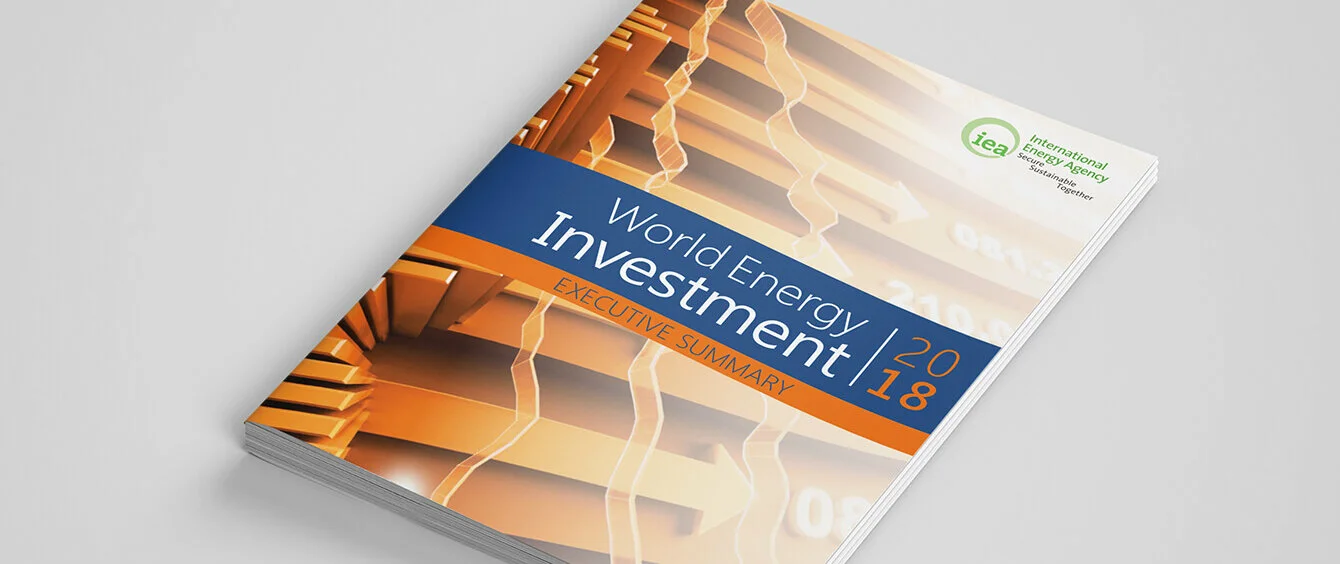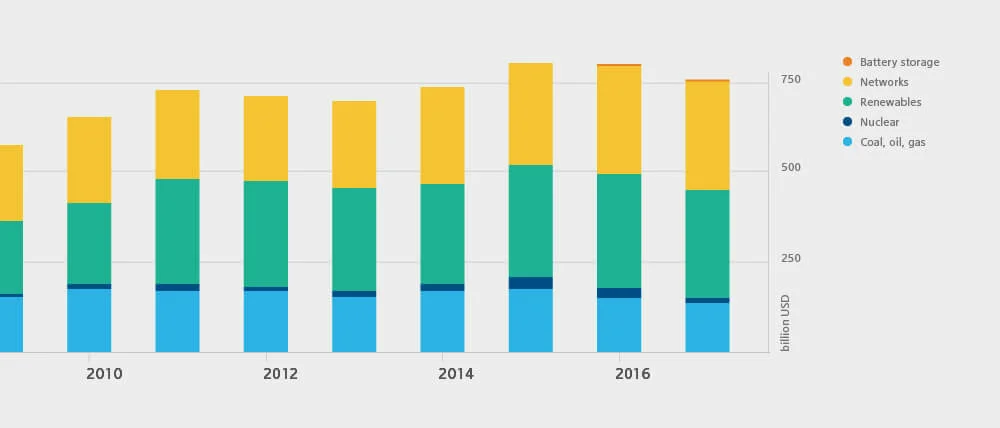At the global level, more money is being invested in electricity than anywhere else in the energy sector. However, a new report issued by the International Energy Agency also shows that spending on renewables is declining and investment in energy efficiency is weakening. One ray of hope is that the situation in Europe is slightly different.
It sounds like a massive number because it is: 1.8 trillion US dollars ($1,800 billion) was invested worldwide in the energy sector last year. This figure was recently published by the International Energy Agency (IEA) in its annual review of investment in the energy sector (‘World Energy Investment’). Compared to 2016, spending fell slightly by two per cent, and thus 2017 marked the third year in a row with lower investment.
Electricity beats oil and gas
Most of the spending was concentrated in the field of electricity supply, with strong investment totalling $750 billion in power grids as the largest item. Consequently, for the second time running capital expenditure in the electricity business surpassed investment in the oil and gas industry, which ‘only’ registered spending of $716 billion. According to the IEA, there are two main reasons for this development: At the global level, the trend towards electrification continues. On the other hand, 95 per cent of the investment in equipment and grids is driven by government requirements and regulations, and accordingly this investment is less dependent on economic cycles than investment by the private sector. Generally speaking, the share of electricity-related spending by government organisations and enterprises is rising. According to the experts in Paris, investment of this kind has increased by more than 40 per cent in the last five years.
Declining investment in renewables
The situation with renewables looks completely different. After seven years with sometimes massive increases, investment in solar, wind, bio-mass and the like contracted by a hefty seven per cent in 2017. Less spending was registered in the fields of wind and hydro power in particular, while China reduced its investment in photovoltaic generation.
This decline could jeopardise the expansion of clean energy which the world needs so urgently, in order to ensure security of supply and also meet the climate targets and guidelines for air quality. We need to see a strong increase in investment in this field, and thus the current developments are very disappointing. Fatih Birol, Executive Dirctor, IEA
The IEA is quite worried about these developments. According to IEA director Faith Birol, “This decline could jeopardise the expansion of clean energy which the world needs so urgently, in order to ensure security of supply and also meet the climate targets and guidelines for air quality. We need to see a strong increase in investment in this field, and thus the current developments are very disappointing.” One particularly disturbing aspect is that investment growth in energy efficiency measures was also weaker than in previous years. Apparently, political support in this field has waned.
Strongly varying developments were seen in the coal and nuclear power industry. In nuclear power, the year-on-year decline of 44 per cent was especially large, and according to the IEA more reactors were shut down than were commissioned. By contrast, the number of coal-fired power plants continued to increase, above all in Asia. At the same time, however, the number of plans for new facilities fell for the second time in a row. In 2017 there were only one third as many construction decisions for these kinds of plants as there were in 2010.
Significant increase in spending on energy efficiency in Europe, in contrast to the overall trend
Europe accounted for almost 15 per cent of global energy sector investment. This ratio has been roughly stable for many years. In monetary terms, this is equivalent to around $270 billion. In contrast to the global trend, investment in energy efficiency in Europe rose strongly last year, with a moderate increase also registered for renewables. The figures were $75 billion and $66 billion, respectively. Robust investment continued to be seen in offshore wind farms in Europe in particular. At the global level, plants with capacity of almost four gigawatts were commissioned in 2017, with the lion’s share of this located in Europe.
The entire report in English can be downloaded here. A detailed English summary of the main findings of the IEA can be found here.
Photo credits: © IEA – International Energy Agency

